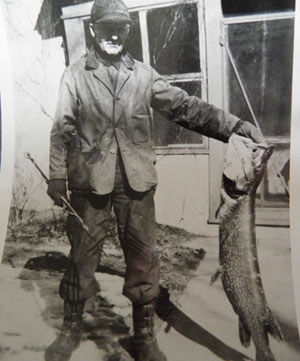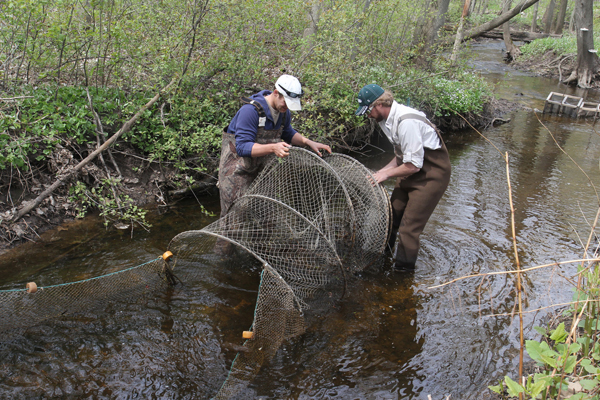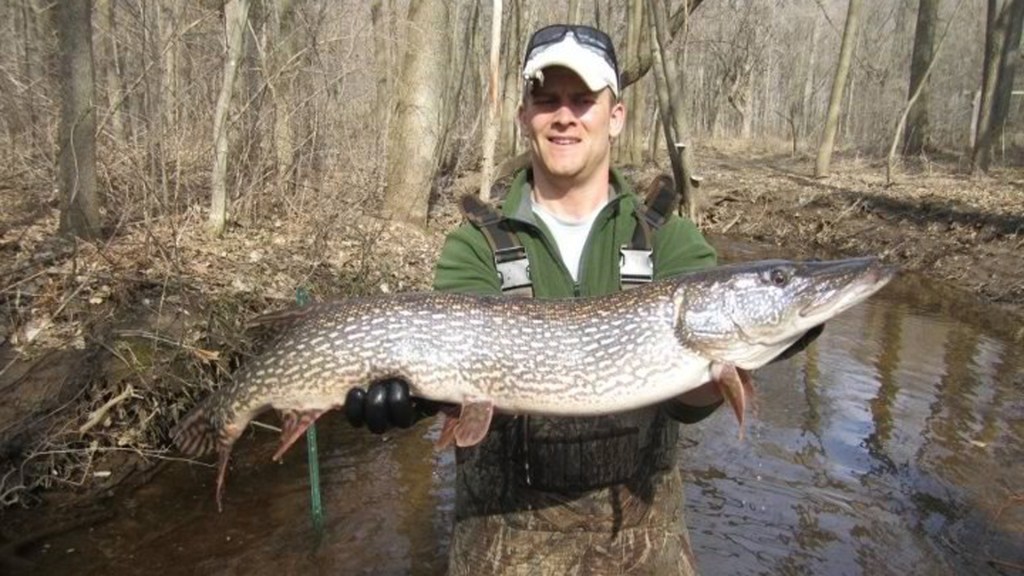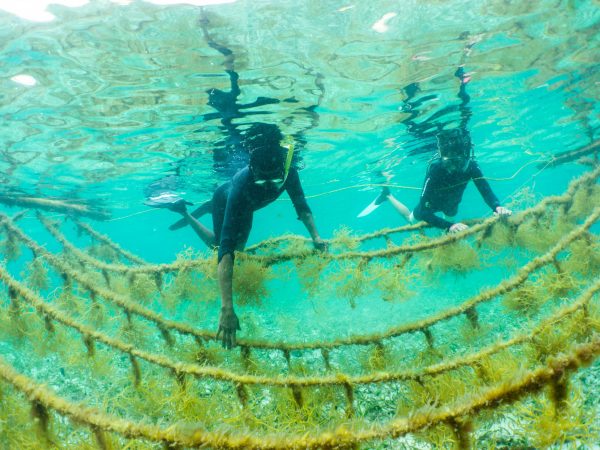Northern pike have always conjured images of wilderness: big, wild lakes, the scent of pine trees, a loon calling in the background.
Large, predatory fish, pike do indeed hunt lake shallows. They’re found in big places—from remote Alaskan and Canadian waters to the Great Lakes.
Come spring, they actually are on the move—traveling up rather small streams in order to spawn.
Researchers in Green Bay, Wisconsin have been tracking pike movements by conducting chemical analyses of pike otoliths, also known as ear stones. Otoliths have annual growth rings, like trees, and accumulate trace chemicals from the surrounding water column as they form.
Many streams have a specific—and unique—combination of chemicals, and this chemical profile shows up in the otolith when fish move from one chemically distinct water body to another.
As such, researchers can determine where pike spent different years of their lives – and if they return to the streams where they were born, or if they use different streams.
This knowledge, in turn, helps conservationists focus on restoring streams that will actually be used by pike.
When I headed out with researchers, I imagined we’d search for pike in wild, lonely places. Instead, we immediately drove to an area across from a small, rural housing development, cars whizzing by as we checked pike traps.
Where could the pike possibly be?
It turns out: In a roadside ditch.
These little ditches— the kinds designed to keep water off the road—have been used for a very long time by pike as spawning sites.
With hundreds of lakes, streams and wetlands within miles of Green Bay, it may seem odd to focus on ditches. But those little channels may be vital in restoring pike populations.

A Pike Expedition – Sort Of
This is one of my favorite photos: my great-great-grandfather John Ritchie stoically hoisting a 44-inch northern pike in one hand, a spear in the other.
To me, the photo always suggests a rugged outdoor life. I picture my him stalking pike on a remote North Woods lake, alone with his thoughts in a rugged frontier.
As I stand by a ditch near Green Bay, Wisconsin with the Conservancy’s Nicole Van Helden and the University of Wisconsin’s Dan Oele, they’re quick to puncture this romanticized view.
“Your relative almost certainly speared this pike out of a ditch,” says Oele. “It was a common practice for decades. People would line up along them and spear the pike, walleyes and suckers that swam past on their spawning runs. They’d fill their freezer with fish. It’s highly doubtful he went to some remote wilderness to spear his pike.”
The little roadside culvert we stand beside looks wide enough to hold a pike, but only barely. A fish that can reach nearly four feet in length needs big water, or so it would seem. That’s the case most of the year, when pike swim through the shallows of Green Bay, devouring any smaller fish they encounter.
Come spring, pike surge up streams flowing into the bay. They quit feeding, and focus on reaching spawning sites.
Historically, streams in this region always followed meandering paths interspersed with wetlands. Pike routinely navigated shallow waters, as long as they were connected to each other.
Roads, farms and towns necessitated ditches throughout much of Wisconsin. But the pike — used to negotiating small waters—simply swam wherever it could, including channels.
“Pike adapted to ditches, because in many ways they are similar to the kinds of channels that used to be in coastal marshes,” says Van Helden, the Conservancy’s director of conservation for Green Bay.
Keeping Pike in the Ditch
Unfortunately, not all ditches are created equal. In some, road culverts are raised inches above the ditch, cutting the pike off from spawning waters. In others, narrow tunnels increase the velocity, blasting the pike away from its final destination.
The Conservancy and partners are currently surveying more nearly 1200 road-stream crossings to see if they could be improved for fish passage. They are calculating stream velocity during the pike migration, and recording culverts that have waterfalls – which effectively stop pike. It’s part of a larger effort to identify the best places to improve passage for a variety of migrating fish species across the Great Lakes.
I’m currently looking into one of the roadside tunnels. It’s a typical roadside pipe running under a bridge. But it is elevated just enough so that it foils any pike that tried to swim up it.
“If you just moved this culvert down a few inches, it wouldn’t be a problem,” says Van Helden.
The research focuses on barrier removals that offer the most opportunities for fish passage at the least cost. The partners are currently creating a map that shows where the biggest barriers are located.
“Roads and culverts do need to be replaced periodically,” says Van Helden. “When the highway department is looking to replace, we want them to know they can redesign culverts so they aren’t barriers. We want fish passage to be a priority.”
It turns out that fish-friendly culverts also reduce bank erosion and have a longer life — reducing costs for highway departments.
“The research on pike reveals what they need,” says Van Helden. “We’ve found that one way we can help pike is to make sure they reach their spawning grounds. In some areas, removing one ditch can open up miles of habitat.”
This is the second post in an ongoing series on Conservancy fisheries research and how that work intersects with some of the biggest, wildest fish in freshwater.





Writing about Great Lakes pike—both angling for and conservation of—for In-Fisherman. How can I reach Dan Oele, Nicole Van Helden, or Matt Miller?
Please reply by e-mail or call 218/828-8136.
Thank you very much for your help!
Matt Straw